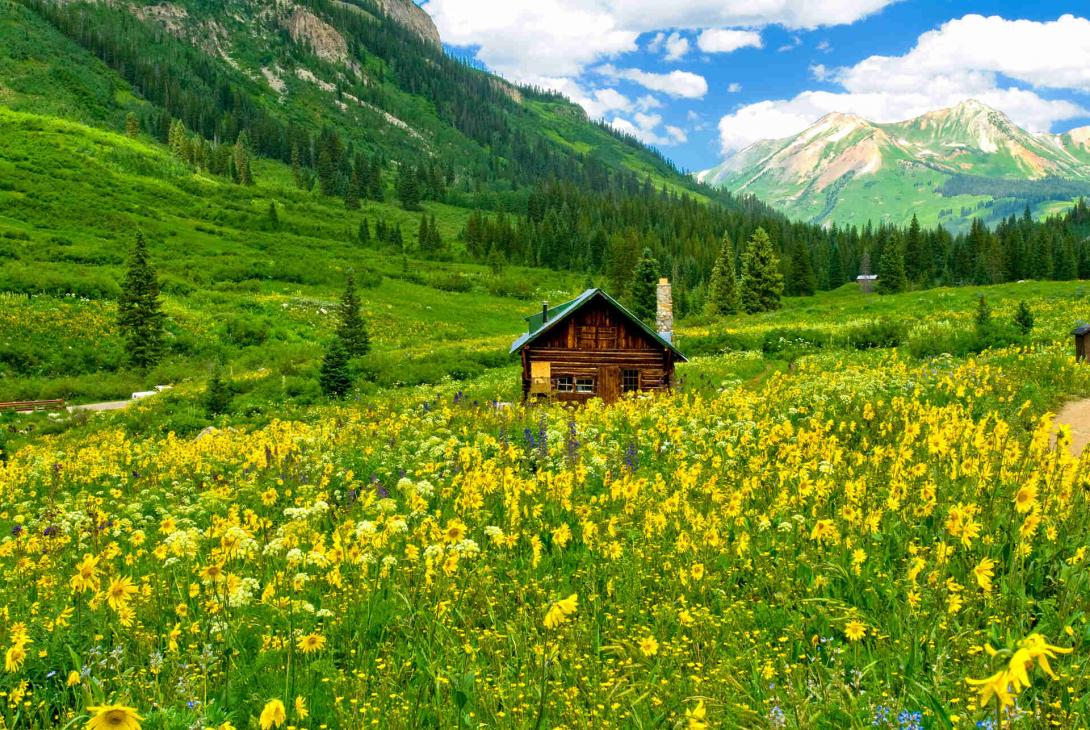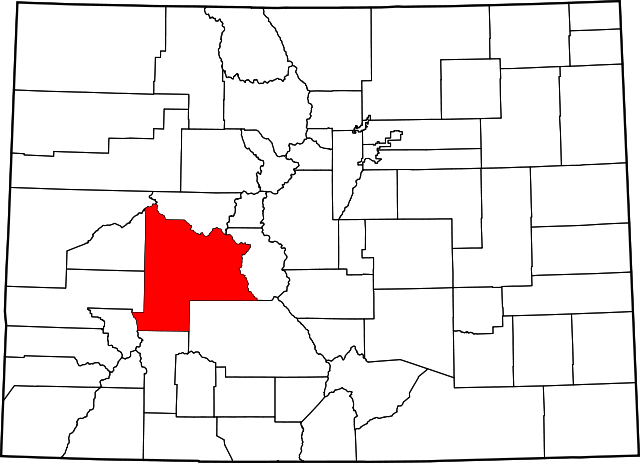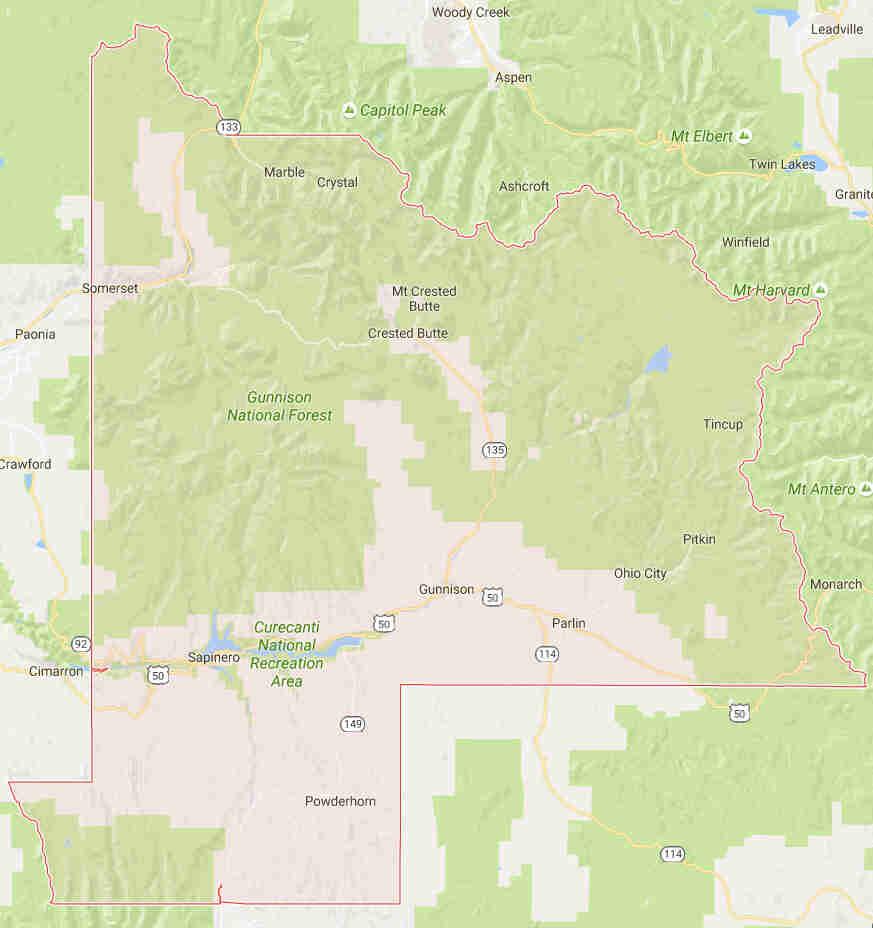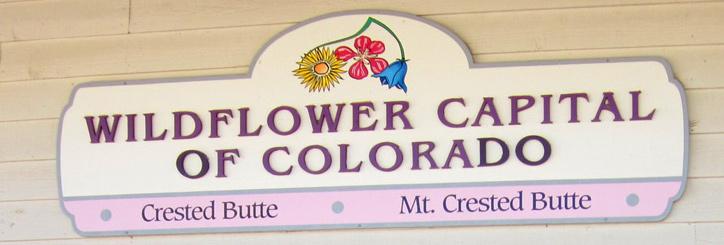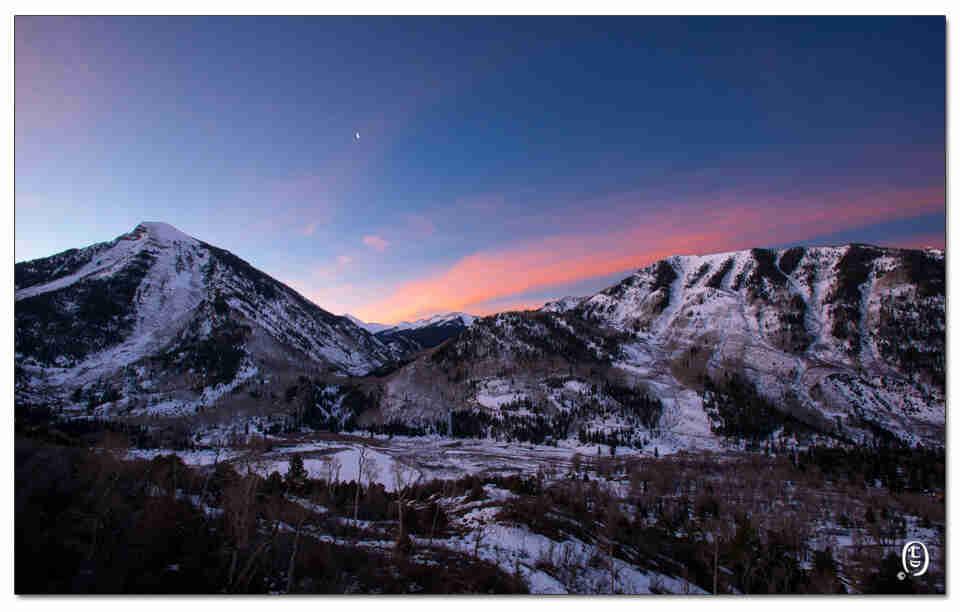Gunnison County
Full Article
Gunnison County, named for the American explorer John W. Gunnison, is a large, mountainous county in west-central Colorado. A sparsely populated county of 3,260 square miles, it includes some 1.5 million acres of national forest and wilderness lands, including the Gunnison National Forest, Collegiate Peaks Wilderness, and West Elk Wilderness. Lying west of the Continental Divide, Gunnison County is bordered to the north by Pitkin and Lake Counties, to the north and east by Chaffee County, to the south by Saguache and Hinsdale Counties, and to the west by Ouray, Montrose, and Delta Counties.
About a third of the county’s 15,324 residents live in the county seat of Gunnison, situated along the Gunnison River in the large valley of the same name. The western end of the valley is home to the Curecanti National Recreation Area and Blue Mesa Reservoir. These and other recreation areas bring thousands of tourists to the county each year. In addition, the town of Crested Butte, in the mountains north of Gunnison, is a popular skiing and winter resort destination. Formerly a coal mining town, Crested Butte reflects the broader economic shift in Gunnison County’s history from ranching and mining to tourism.
Native Americans
The Gunnison County area has a long history of human settlement, beginning with Paleo-Indian and Archaic period peoples in the western part of the county and continuing with the Ute people from the sixteenth through nineteenth centuries. Two distinct bands of Utes occupied present-day Gunnison County: to the north of the Gunnison River ranged the Parianuches, or “elk people,” while the Tabeguaches (later called the Uncompahgres) frequented most of the Gunnison Valley and the surrounding mountains. The Utes hunted elk, deer, and other mountain game. They also gathered a wide assortment of roots and wild berries, including the versatile yucca root. In the summer they followed large game into the Gunnison Valley and other parts of the high country, and in the winter they camped in places like Glenwood Springs.
Gunnison Expedition
Europeans did not reach the Gunnison County area until the early 1800s, when French trappers arrived. William Gilpin, who would later become Colorado’s first territorial governor, passed through the region on his way to Oregon in 1845. In 1853 Captain John W. Gunnison, a former explorer of the Salt Lake area, was asked to find a rail route to the Pacific through the Rocky Mountains. In late summer, after a brutal journey over the Front Range, he arrived in the valley that would bear his name. Gunnison got as far as the Sevier River in western Utah, where he and all but four of his men were killed in an attack by a group of Paiute people.
Mining and County Formation
In 1861 gold was found along the Taylor River, but Ute attacks halted attempts to create mines during the 1860s. The Treaty of 1868 created the Consolidated Ute Reservation, which pushed the Utes to the western portion of what would become Gunnison County. Prospectors also found gold in other gulches around the northern part of the county as early as 1867, but mining did not seriously begin until 1872, when silver ore was found in the Elk Mountains.
After becoming enamored with the area in an 1873 expedition, Sylvester Richardson organized the first white settler colony in the Gunnison Valley in 1874. Members of Richardson’s party, which numbered fewer than twenty, found well-watered farmland along the river, and they also found coal in one of its tributaries, Ohio Creek. But the colony failed to attract more settlers until 1879, when other gold and silver discoveries in the mountains brought more people to the region. Richardson, a geologist, was also the first to note the marble deposits of the Crystal River valley. Two towns, Clarence and Marble, were established there in the early 1880s, but significant activity would not occur in the valley until the turn of the century.
Meanwhile, Colorado gained statehood in 1876, and the next year Gunnison County was established as a 12,000-square-mile partition stretching from the foot of the Continental Divide in the east to the Utah border in the west. Between 1881 and 1883, the county ceded land for the creation of Pitkin, Montrose, Delta, and Mesa Counties, obtaining its current size and shape.
By the mid-1870s, the mountains of Gunnison County were dotted with many small mining camps. Crested Butte began as a supply camp at this time and was incorporated in 1880. Coal mined in the Crested Butte area provided the energy that helped gold and silver miners blast away rock to access veins and separate the precious metals from stubborn ore. In addition, increased demand for marble and the arrival of railroads in the Crystal River valley during the late nineteenth century led to a surge in marble quarrying around the town of Marble. In 1905 Channing F. Meek, the former president of the Colorado Coal & Iron company, came to Marble and formed the Colorado Yule Marble Company. Demand for the decorative white stone surged over the next two decades, and marble from the Crystal River valley was used to build such national landmarks as the Lincoln Memorial and the Tomb of the Unknown Soldier.
As it did elsewhere, silver mining in Gunnison County petered out by 1893 with the exhaustion of accessible ore and plummeting prices. Gold mining continued, peaking between 1908 and 1913. With the exhaustion of precious metals, Gunnison County miners shifted to coal production. By 1882 mines built by the Colorado Fuel & Iron Company made the Crested Butte area the most productive coal site in the Colorado Rockies. But soon tragedy struck: in 1884 the Jokerville Mine exploded, killing fifty-nine workers. The company rode out rumors of retaliation by other miners and soon after opened Big Mine, which became one of the most productive coal mines in the state and remained in operation until 1952.
In 1961 the Crested Butte ski resort was established on Mt. Crested Butte, contributing to Gunnison County’s growing tourism economy and putting the ex-mining town on the path to becoming a premier winter sports destination.
Farming and Ranching
While Gunnison County’s mountain mines hummed during the 1880s, a number of farms and ranches were established in the valley below. Following the Meeker Incident of 1879, most of the remaining Tabeguache Utes were removed to the Uintah-Ouray Reservation in Utah, and the Gunnison Valley was opened to white agriculture. Hay and potatoes became staple crops, and cattle and sheep ranching also became profitable. By 1900 these industries had eclipsed mining as the most important activities in the county. That same year, the economic transition was marked by the inaugural celebration of Cattlemen’s Days. It has become an annual event that celebrates the county’s agricultural history and hosts one of the most popular rodeos in the nation.
Western State Colorado University
Accompanying Gunnison’s agricultural boom was the opening of the State Normal School in 1911. The first college on the Western Slope, it was founded as a preparatory school for teachers. In 1923, due to its expanding and highly respected liberal arts programs, the name was changed to Western State College of Colorado. New buildings, including a library and the president’s house, were added during the 1930s. After World War II, enrollment steadily increased, peaking at around 3,000 in 1970. In 2012, with student body of 2,300, the college was renamed Western State Colorado University.
Natural Areas
Gunnison National Forest was established in the spring of 1905. Forest Rangers were initially met with suspicion and hostility from area ranchers anxious about the potential loss of grazing land. But these fears proved unfounded; as it did elsewhere, the Forest Service allowed livestock to range on forest land, and at the same time made painstaking efforts to ensure that grazing did not compromise the health of the forest.
In 1964 the Wilderness Act permitted the establishment of a number of wilderness areas in Gunnison County, including West Elk Wilderness in 1964 and the Collegiate Peaks and Raggeds Wildernesses in 1980.
Blue Mesa Dam and Reservoir
Blue Mesa Dam, a 390-foot earthen barricade on the Gunnison River a few miles before it enters the Black Canyon, was designed in the mid-twentieth century as part of the Colorado River Storage Project. The project’s ultimate goal was to build an interstate system of strategically placed dams and reservoirs that would store and regulate the flow of the Colorado River. The part of the project on the Gunnison River included not only Blue Mesa Dam but also the Morrow Point Dam and power plant, and was referred to as the Wayne Aspinall Unit. With the Bureau of Reclamation overseeing construction, work on the Blue Mesa Dam began in 1961 and ended in 1971.
In addition to helping the Bureau of Reclamation achieve its goal of regulating the Colorado River, Blue Mesa Dam contributed to Gunnison County’s rapidly growing tourism industry. Blue Mesa Reservoir, one of three reservoirs at the center of the Curecanti National Recreation Area, soon became a hotspot for boating, fishing, camping, and hiking.
Today
As indicated by the popularity of its reservoirs, national forests, and the Crested Butte Ski Resort, the Gunnison County economy today relies heavily on tourism. Twenty-five percent of employment in the county is in the leisure and hospitality sector. The tourism industry as a whole creates jobs for 1,870 people, more than the seven biggest employers in the county combined. However, most of these jobs pay an average of only $17,000, leading a significant number of residents to rate county employment opportunities as “fair” or “poor” in the county’s 2013 Biennial Survey.
Ranching remains an important and attractive aspect of Gunnison County’s identity, as well as an economic driver. Gunnison ranches produce an estimated 3 million pounds of beef each year valued at $13 million, and many tourists have reported that the sprawling ranches make the county landscape more attractive, especially in winter. Organizations such as the Gunnison Ranchland Conservation Legacy, founded in 1996, work to keep ranching profitable and environmentally sustainable.
Along with employment opportunities, Gunnison County also faces challenges related to school funding, a higher-than-average poverty rate, and a housing shortage. However, the same rural charm and scenic beauty that attracts so many tourists appears to have also won the hearts of county residents, as they continue to report satisfaction with their quality of life and to recommend Gunnison County as a place to live.


